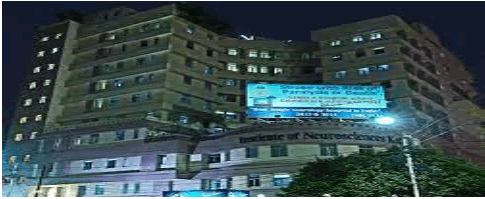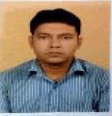Indexed In
- RefSeek
- Hamdard University
- EBSCO A-Z
- OCLC- WorldCat
- SWB online catalog
- Publons
- International committee of medical journals editors (ICMJE)
- Geneva Foundation for Medical Education and Research
Useful Links
Share This Page
Open Access Journals
- Agri and Aquaculture
- Biochemistry
- Bioinformatics & Systems Biology
- Business & Management
- Chemistry
- Clinical Sciences
- Engineering
- Food & Nutrition
- General Science
- Genetics & Molecular Biology
- Immunology & Microbiology
- Medical Sciences
- Neuroscience & Psychology
- Nursing & Health Care
- Pharmaceutical Sciences
Value Added Abstract - (2020) Volume 0, Issue 0
Clinical Profile and Treatment Response of Hypermanganesemia with Dystonia, Polycythemia and Cirrhosis in a Rural Indian Family
Arpan Dutta*Published: 16-Sep-2020
Abstract
Statement of the Problem: Hypermanganesemia with dystonia, polycythemia and cirrhosis is a rare disease caused by mutations of SLC30A10 gene, resulting in accumulation of excess manganese in brain, blood and liver. Apart from dystonia, polycythemia and cirrhosis, Parkinsonism features may also be present in this life threatening but treatable disorder. Chelation with calcium disodium EDTA combined with oral iron therapy and dietary manganese restriction is the preferred treatment modality. Alternative chelating agents include DMSA and d-penicillamine. We hereby describe the clinical profile of 3 siblings who were diagnosed with this rare disease and explore the treatment response to an alternative agent (d-penicillamine) which is important in resource poor settings where calcium disodium EDTA is not available.
Methodology & Theoretical Orientation: Clinical findings of the 3 siblings were documented and relevant investigations e.g. complete hemogram, liver function tests, MRI of brain, fibroscan etc. were done. Diagnosis was confirmed via clinical exome sequencing. Serum manganese levels were obtained before and after treatment which comprised of d-penicillamine combined with oral iron therapy and dietary manganese restriction.
Findings: Only one sibling had the triad of dystonia, polycythemia and cirrhosis. The other two were asymptomatic with a normal clinical examination and no evidence of polycythemia or cirrhosis. MRI of brain showed T1 hyperintensity involving bilateral basal ganglia and brainstem in two of them. Serum manganese levels were elevated in all the 3 siblings and clinical exome sequencing revealed a novel homozygous missense mutation (c.122C>T) of SLC30A10 gene in all of them.
Conclusion & Significance: This study documents the clinical profile of a novel genotype of SLC30A10 and also shows that treatment of hypermanganesemia with dystonia, polycythemia and cirrhosis can be satisfactorily done by d-penicillamine if calcium disodium EDTA is not available.

Biography:
Arpan Dutta is currently a resident in the Department of Neurology, Bangur Institute of Neurosciences, Kolkata, India and is pursuing DM Neurology course. He has completed his MBBS degree from Nil Ratan Sircar Medical College, Kolkata, India and MD General Medicine degree form IPGMER, Kolkata, India.

Speaker Publications:
1. Anagianni S, Tuschl K. “Genetic disorders of manganese metabolism”. Curr Neurol Neurosci Rep. 2019 May; 19: 33.
2. Quadri M, Kamate M, Sharma S, et al. “Manganese transport disorder: novel SLC30A10 mutations and early phenotypes”. Mov Disord. 2015 Mar; 30(7): 996-1001.
3. Zaki MS, Issa MY, Elbendary HM, et al. “Hypermanganesemia with dystonia, polycythemia and cirrhosis in 10 patients: six novel SLC30A10 mutations and further phenotype delineation”. Clin Genet. 2017 Nov; 93(4): 905-912.
4.Mukhtiar K, Ibrahim S, Tuschl K, Mills P. “Hypermanganesemia with dystonia, polycythemia and cirrhosis (HMDPC) due to mutation in the SLC30A10 gene”. Brain Dev. 2016 Oct; 38(9): 862-865.
5. Tuschl K, Clayton PT, Gospe SM Jr, et al. “Syndrome of hepatic cirrhosis, dystonia, polycythemia, and hypermanganesemia caused by mutations in SLC30A10, a manganese transporter in man”. Am J Hum Genet. 2012 Mar; 90(3): 457-466.
34th European Neurology Congress; Webinar-June 24-25, 2020.
Abstract Citation:
Arpan Dutta, Clinical profile and treatment response of hypermanganesemia with dystonia, polycythemia and cirrhosis in a rural Indian family, Neurology Congress 2020, 34th European Neurology Congress Webinar- June 24-25, 2020.

